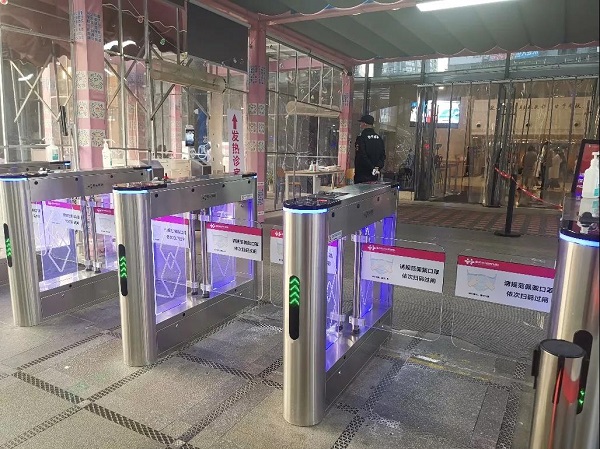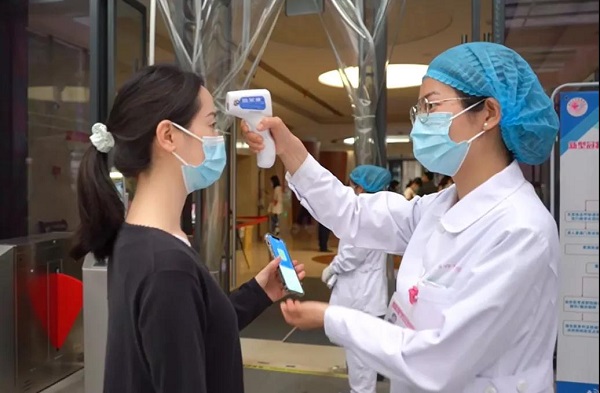CQHCWC strengthens COVID-19 prevention and control

Code scanning gate machines are installed at the CQHCWC. [Photo/CQHCWC]
The Chongqing Health Center for Women and Children (CQHCWC), located in Southwest China's Chongqing, has been taking scientific and well-organized COVID-19 epidemic prevention and control measures to ensure medical quality and patient safety.
As the Spring Festival approaches, many people will be traveling and gathering. Therefore, the CQHCWC has strengthened its epidemic prevention and control measures according to national and municipal requirements to lower the risk of transmission.
The center has enhanced hardware protection and installed code scanning gate machines at each pre-check and triage site, offering comprehensive, fast and efficient pre-check and triage services. It has also launched a new steel-structured fever clinic, providing fever patients with full-process closed-loop management services integrating registration and payment, nucleic acid testing, diagnosis and treatment, and medicine.
It is also strictly managing connections between the entrance, clinic and hospitalization, taking people's temperatures, enforcing hand hygiene and mask wearing, and checking the health codes of all people entering the hospital. It is also disinfecting all items before putting them in storage.

A medical worker takes the temperature of a woman entering the CQHCWC. [Photo/CQHCWC]
In addition, the center is requiring appointments for diagnosis and treatment to reduce the congregation of patients. It has also strengthened epidemiological consultations and the detailed recording of disease courses.
For new inpatients and their companions, nucleic acid testing will be required. The wards are under 24-hour access control management and not allowing visits. The center plans to strengthen supervision and publicity.
It has also carried out training and assessments to strengthen prevention and control awareness among staff members and improve their epidemic prevention and control skills. Emergency drills have been carried out as well to establish a responsive and effective early warning mechanism and improve the emergency response capabilities of various departments.
Leaders of the center and work groups will also conduct regular inspections, focusing on the implementation of normalized prevention and control measures, training and assessments, and material reserves so as to identify risks and take precautions.
Moving forward, the CQHCWC will strengthen epidemic prevention and control work and improve emergency response capabilities for public health emergencies to ensure a safe holiday for the public.

 CQHCWC: Nurture healthier futures for children
CQHCWC: Nurture healthier futures for children How to help children develop healthy eating habits
How to help children develop healthy eating habits Wechat
Wechat Weibo
Weibo